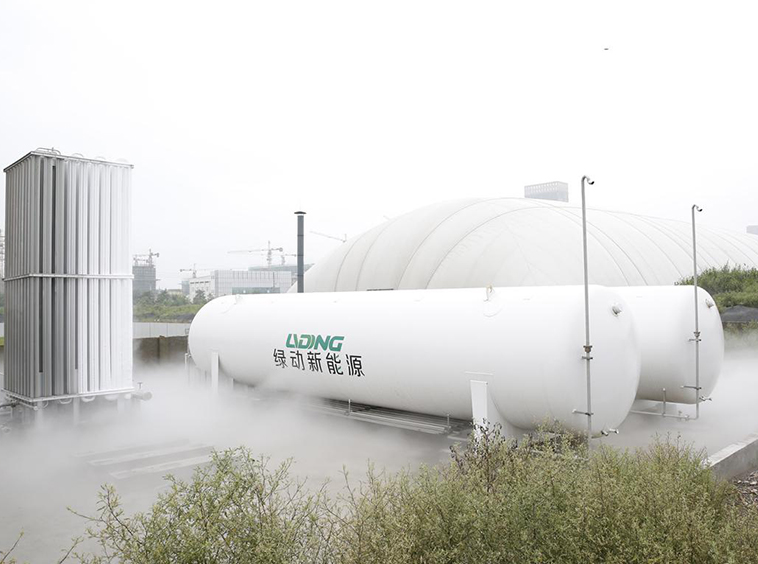Name: Jiangsu Jianye Chemical Equipment Co., Ltd.
Contact: Liu Yong
Phone:0512-58370568
Mobile:13806225925
Fax:0512-58371568
Mailbox:ly925@jylng.cn
Address: Sanjiali Road, Nansha, Jingang Town, Zhangjiagang City
Website:en.jylng.cn
There is no uniform standard for the design definition of cryogenic storage tanks themselves. Compared with the UK, the technical standards in this respect are relatively comprehensive. The standard "flat-bottom vertical cylindrical cryogenic storage tank application" defines low-temperature tanks as three-tank, single-tank, double-container and full-container tanks according to different process requirements and medium storage methods. Single-container cans generally consist of a steel inner can and an insulated casing, while double-container and full-container cans are made of a steel inner can and a steel or concrete (usually prestressed concrete). The outer tank is composed of heat preservation between the inner and outer tank walls. At present, the double tank form is used more.
In the design of the cryogenic tank, due to the conduction of the low-temperature medium in the tank, the foundation soil is prone to freeze up and the soil is bulged, which causes the foundation damage. Therefore, in order to eliminate this unfavorable factor, in addition to the tank bottom plate and the base plate In addition to the insulation measures between the surfaces, it is necessary to take anti-freeze measures on the tank foundation. There are two common methods. One is to use electricity or other heating system in the base plate, that is, to make a see-saw foundation with a circulating heating system. The other is to use an air layer formed by overhead to separate the base floor from the foundation soil. The former is generally not used because of the high cost of the heating system.

In most cryogenic tanks imported and built in China, an overhead raft foundation form is commonly used. The net height of the overhead layer is generally determined in addition to the process piping and equipment layout requirements, and is still determined based on the temperature of the storage medium in the tank.
The overhead raft foundation can be divided into two types: single slab (cap) and double slab (cap). In the case of better geological conditions, the double raft foundation form can be used; The requirements for foundation settlement of tanks are relatively high. In most cases, especially on soft soil foundations with poor geological conditions, single rafters (caps) pile foundations are used, and sometimes double slabs are used. ) Pile foundation.
Structure of cryogenic liquid storage tank:
Liquid natural gas must be stored in a cryogenic storage tank. The cryogenic storage tank is usually composed of an inner tank and an outer tank, and is filled with a heat insulating material.
Inner can
The inner tank, also known as the "film tank", is a liquid-tight and flexible inner container made of a thin low-temperature steel sheet. It must pass the hydraulic head to the insulation. The material used as the film must have characteristics that are not embrittled under low temperature conditions, and have sufficient toughness and good processability. Nickel steel, stainless steel or aluminum alloy is usually used.
Outer can
(also known as tank)
An outer can is an outer casing that can withstand various loads and must have sufficient strength. According to the materials used, it can be divided into the following types: frozen soil wall, steel wall, reinforced concrete wall and prestressed concrete wall.
1 frozen soil wall. The frozen soil wall and the heat insulating cover form a hermetic closed space as an outer tank, which is also called a pit storage hole. At the time of construction, a cooling pipe is used to freeze the soil around the inner tank. After the pit storage is put into production, the low temperature liquid will keep the surrounding state frozen, and the frozen soil layer will expand year by year, so the evaporation loss will also decrease year by year. A prerequisite for the construction of pits is to have a higher water table. In addition, the bottom of the pit should be the least accessible rock or clay layer.
2 steel wall (including alloy and aluminum). It is only applicable to the above-ground cryogenic storage tanks for the construction of low-temperature storage tanks of liquefied natural gas. Unlike ordinary normal temperature storage tanks, it is necessary to consider that the ground under the tanks will bulge due to soil freezing and expansion, which may cause damage to the storage tanks. Therefore, measures must be taken to prevent the ground soil from freezing. Generally, the above ground storage tanks can be divided into two types: floor-standing and overhead. The floor-type bottom is insulated with perlite concrete, hot air or hot water is introduced into the pre-buried pipe, or an electric heater is preset inside the foundation to prevent the soil from freezing. The overhead type supports the tank chassis with columns to separate it from the ground, keeping the air between the tank and the ground clear, preventing liquefied natural gas from absorbing a large amount of heat on the ground to avoid soil freezing.
3 reinforced concrete walls and prestressed concrete walls. These two outer walls are the main materials for the underground tank casing and have the following advantages:
a. Reinforced concrete and prestressed concrete are good low temperature materials. Even if the film is damaged, the low temperature liquid storage will not damage the outer wall when it contacts the prestressed concrete wall;
b. Good durability, free from ground water corrosion, and not brittle;
c. It has good liquid tightness and good seismic performance.